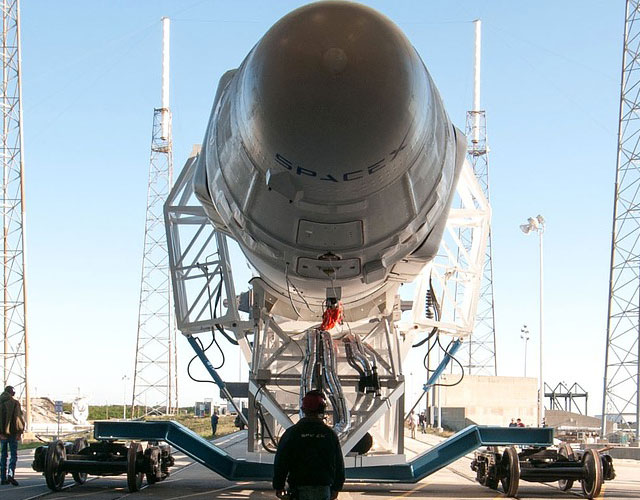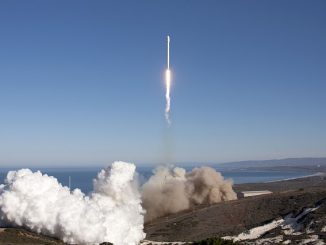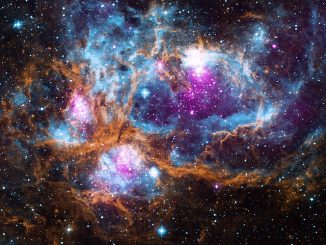
SpaceX announced late Wednesday (Jan. 24) that it had completed a critical static fire test on its Falcon Heavy rocket. The hold-down test of the incredibly complex super heavy-lift launch vehicle, which is the largest since NASA’s Saturn Vs that took us to the moon, sets the stage for the megarocket’s inaugural flight in upcoming weeks.
In fact, in a Twitter post, SpaceX/Tesla CEO Elon Musk said Heavy’s hotfire test, which involved firing for about 10 seconds all of the rocket’s 27 Merlin 1D main engines (nine on each of its three main boosters) at once, while the rocket was securely attached to a launch pad, was a success, and that the rocket’s first flight could be just a week away.
“Falcon Heavy hold-down firing this morning was good. Generated quite a thunderhead of steam,” Musk wrote. “Launching in a week or so.”
Footage of the test fire shows the eruption of a massive cloud of exhaust and steam swallowing NASA’s historic Launch Pad 39A while the Heavy’s engines give off a deafening roar.
The megarocket’s launch will represent another major first for Musk and his company’s pursuit of re-usability. Two of the Heavy’s side-mounted first stage boosters are expected to jettison from the rocket’s core around two-and-a-half minutes after liftoff, then fly back to Earth and land at Cape Canaveral Air Force Station. Meanwhile, the central core booster will continue firing a bit longer before switching off its nine engines to land on a SpaceX recovery barge floating in the middle of the Atlantic ocean.
For the Falcon Heavy’s first payload, Musk has picked his own midnight-cherry-red Tesla Roadster, which would be launched on a trajectory aimed for Mars orbit. However, Musk has said that the rocket could fail on its debut test flight.
It will, Musk predicted just over a month ago, “be in deep space for a billion years or so if it doesn’t blow up on ascent.”
The Falcon Heavy launch comes just over four months after the billionaire entrepreneur outlined his vision for the establishment of a lunar base and a permanent Mars colony by 2022.
“The future is vastly more exciting and interesting if we’re a space-faring species than if we’re not,” said Musk during his keynote at the 68th International Astronomical Congress conference held Sept. 29. “It’s about believing in the future and thinking the future will be better than the past.”
That project will require an even larger rocket than Falcon Heavy, though. It’s called the BFR, or Big Falcon Rocket, an eight stories tall, re-usable 42-engine rocket that will replace both Falcon 9 and Falcon Heavy launch vehicles, as well as the Dragon spacecraft.
SpaceX plans to start building its first BFR by mid year.
Reference: spaceflightnow
- Bulenox: Get 45% to 91% OFF ... Use Discount Code: UNO
- Risk Our Money Not Yours | Get 50% to 90% OFF ... Use Discount Code: MMBVBKSM
Disclaimer: This page contains affiliate links. If you choose to make a purchase after clicking a link, we may receive a commission at no additional cost to you. Thank you for your support!




Leave a Reply